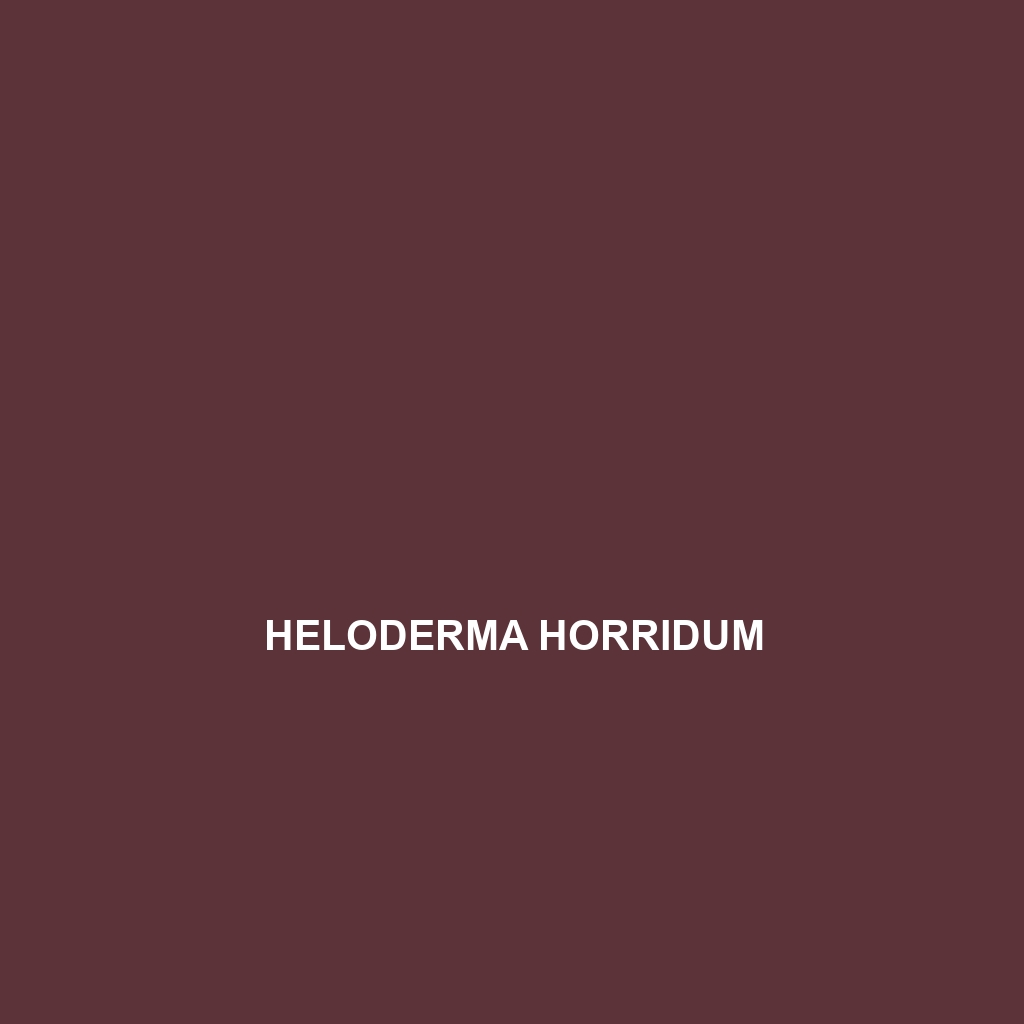Common Name
Heloderma exasperatum
Scientific Name
Heloderma exasperatum
Habitat
Heloderma exasperatum, commonly known as the Mexican beaded lizard, primarily inhabits the temperate forests and savannas of western Mexico, particularly in the states of Jalisco, Colima, and Michoacán. This species favors environments with dry, rocky terrain and areas dense with vegetation where it can hide from predators and ambush prey. These lizards thrive in climates characterized by warm temperatures and seasonal rainfall. They can also be found in semi-arid regions, showcasing their adaptability to varying environmental conditions. Their habitat often features a mixture of scrub, grasslands, and patches of rainforest, making them integral inhabitants of these biodiversity-rich ecosystems.
Physical Characteristics
The Mexican beaded lizard is known for its striking appearance, characterized by its robust body and distinctive bead-like scales. Adult Heloderma exasperatum can grow to about 2 to 3 feet in length, though larger specimens are occasionally reported. Its coloration typically ranges from black to dark brown, accentuated by vibrant yellow or orange bead-like patterns that serve as excellent camouflage against the rocky backdrop of its habitat. These lizards have a broad, triangular head with small, bead-like scales covering their bodies, imparting a unique texture. One unique feature of this species is its venomous bite, which is facilitated by grooves in its teeth that allow venom to flow into its prey, playing a vital role in its predatory strategy.
Behavior
Heloderma exasperatum exhibits primarily nocturnal behavior, remaining hidden during the day to avoid the heat and potential predators. These lizards are solitary creatures, coming together primarily during the mating season. They are known for their burrowing habits, creating dens that provide shelter and protection from harsh weather. Social interactions are limited, but they exhibit territorial behavior, particularly males during breeding season. Mating rituals include a series of courtship displays, such as head bobbing and tongue flicking, which are crucial for communication. The lizards are also capable climbers and may ascend trees or shrubs in search of food or to escape threats.
Diet
Heloderma exasperatum is a carnivorous species, primarily preying on small mammals, birds, and various insects. Their diet is mainly composed of rodents, such as mice and rats, which they detect using their keen sense of smell. As ambush predators, they utilize their camouflage to blend into their surroundings, lying in wait until the right moment to strike. Their venoms play a significant role in immobilizing prey, allowing them to consume more substantial animals than would otherwise be possible for a lizard of their size. As a whole, they are classified as carnivores but rarely exhibit opportunistic behavior, feeding mainly throughout their active hours structured around nocturnal hunting patterns.
Reproduction
The reproductive cycle of Heloderma exasperatum typically occurs between late spring and early summer. Mating involves complex displays and can last several hours as males compete for females. After mating, females lay a clutch of approximately 3 to 15 eggs, which they deposit in moist soil or rotting vegetation, ensuring warmth and humidity for the developing embryos. The incubation period lasts around 4 to 6 months, and hatchlings emerge during the fall. Once hatched, the young lizards are independent and receive no parental care. This solitary nature further underscores the adaptations that Heloderma exasperatum has evolved in its lifecycle.
Conservation Status
The conservation status of Heloderma exasperatum is currently classified as vulnerable by the International Union for Conservation of Nature (IUCN). Major threats to their population include habitat destruction due to agriculture, urbanization, and illegal poaching for the pet trade. Conservation efforts are underway to protect their natural habitats, including the creation of wildlife reserves and education programs to inform local communities about the species’ ecological importance. However, continued monitoring and enforcement of protective measures are essential to ensure the survival of this unique species.
Interesting Facts
Heloderma exasperatum is renowned for its impressive, venomous bite and is one of the very few venomous lizard species in the world. Its venom contains a mixture of enzymes that help break down food and can deliver a painful bite, serving as a deterrent to potential threats. This species has an intriguing social structure, where non-breeding males may cohabitate in shared dens, often observed in populations during the colder months. Additionally, the Mexican beaded lizard possesses a fascinating adaptive feature—its ability to survive on minimal water intake, drawing hydration primarily from its prey.
Role in Ecosystem
Heloderma exasperatum plays a vital role as a predator within its ecosystem, influencing the population dynamics of its prey species. By controlling the numbers of small mammals and insects, it helps maintain a balanced ecosystem. This species also serves as prey for larger predators, contributing to the food web. The venom of Heloderma exasperatum has garnered interest in medical research, potentially leading to developments in pain management and treatment for certain ailments. This unique lizard, therefore, not only enriches biodiversity through its predatory role but also has implications for human health through ongoing scientific study.
